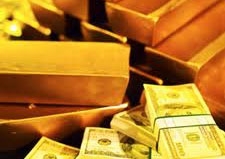Economy set to cool in 2011 after red hot 2010
 Alan Pham, chief economist of VinaSecurities Joint Stock Company, said he expected the government would put more emphasis on stability and less on growth this year.
Alan Pham, chief economist of VinaSecurities Joint Stock Company, said he expected the government would put more emphasis on stability and less on growth this year.
“We think monetary policy will be tight until the end of the second quarter and moderately ease in the third quarter,” Pham told a company workshop on the country’s 2011 prospects in Ho Chi Minh City.
He anticipated the central bank’s base rate would be 10 per cent in the first half of 2011 and grow to 11 per cent in the second half and be maintained for the rest of the year. “Thus, the interest rate for deposits would fluctuate among 11-12 per cent, resulting in that of lending standing within 14-15 per cent. The interbank exchange rate would be around VND20,500 by the year’s end 2011, versus VND19,500 at the end of 2010.”
“Gold hit a record high in 2010, up almost 45 per cent compared to the end of 2009. The highest-ever price was set at VND38.5 million per tael in November 2010. The significant gap between local versus global gold price spurred illegal imports of gold, pressuring the stability of the forex market during October-December 2010,” Pham said.
Vietnam ended 2010 with inflation hitting 11.75 per cent against the end of 2009. This is the result of a loosening in monetary policy in the year’s second half, especially in October-December. According to VinaSecurities, inflation would likely continue through the first quarter of 2011 due to high consumption during the seasonal festivities. Monetary policy should be tightened further now so as to have its effect felt starting in the second half.
“The country was downgraded by Fitch last June, and by Moody’s and S&P last December and the reasons were high inflation, unstable Vietnamese dong, weak international balance of payments and debt problem at state-owned enterprises. However, the government is trying to shift the macroeconomic ship to a controllable area in 2011. Estimated credit growth for this year would stand at 23 per cent instead of 27.6 per cent last year,” Pham said.
Tony Hsun, managing director for a close-end infrastructure fund listed on the London Stock Exchange’s AIM market, said: “The worst is over for Vietnam in 2011. The economy will be less uncertain and there will be more positive elements, especially the government’s pro-stability stance with estimated gross domestic product (GDP) target for whole year of 7.2-7.5 per cent.
“The stock market will be renewed with vigor and confidence as VN-Index is cheap versus region and bad macro news already priced in November 2010. P/E is 10x versus regional average 12x-16x.”
Regarding infrastructure, Hsun said that growth prospects would be mixed, depending on sub-sectors, seeing higher dividend yield at about 5 per cent versus overall market at 2-3 per cent. As interest rate would be likely to remain high, companies with high cash level and low leverage would be favoured, especially those in in energy and agriculture sectors.
“However, negative outlooks will be still seen for shipping sector due to slower than expected recovery, rising oil prices and rising US dollar interest rates,” he noted.
Marc Townsend, managing director of CBRE Vietnam, said: “Overall property investment remains dangerous for everyone’s health in 2011 until gold dips and buyers and/or speculators move to other directions.”
What the stars mean:
★ Poor ★ ★ Promising ★★★ Good ★★★★ Very good ★★★★★ Exceptional
Latest News
More News
- Global partnerships key to Vietnam’s IFC development (December 26, 2025 | 16:18)
- Vingroup pulls out of bid to invest in North-South high-speed railway (December 26, 2025 | 11:42)
- Strengthening supply chains through trade promotions and customs reform (December 24, 2025 | 14:00)
- PM orders investment model for North–South high-speed rail (December 22, 2025 | 17:43)
- LS Eco Energy to invest in Vietnam rare earth sector (December 22, 2025 | 17:31)
- Government moves to establish International Financial Centre (December 21, 2025 | 21:00)
- Vietnam's IFC to target global investment flows (December 21, 2025 | 18:00)
- Two national hospitals expand capacity with new facilities (December 20, 2025 | 09:00)
- Ha Tinh breaks ground on major Vingroup industrial and energy projects (December 19, 2025 | 18:24)
- EVN launches major power infrastructure projects nationwide (December 19, 2025 | 18:17)

 Tag:
Tag:
















 Mobile Version
Mobile Version